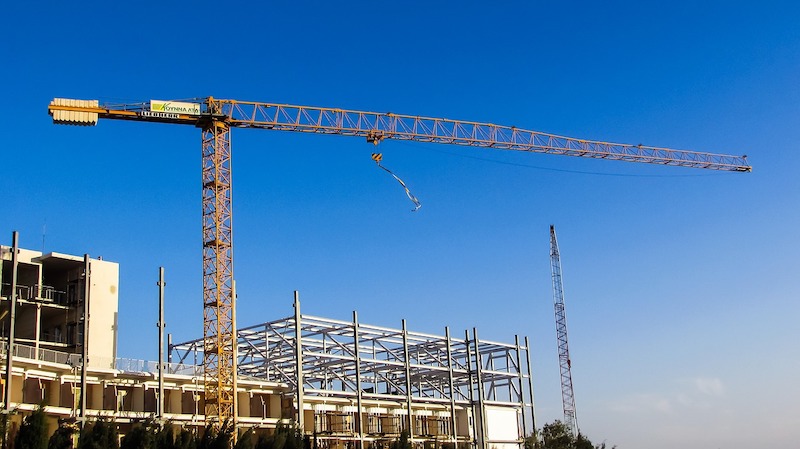Construction employment declined by 61,000 in February, while the sector’s unemployment rate soared to 9.6% amid severe winter weather and continuing weakness in new nonresidential projects, according to an analysis by the Associated General Contractors of America of government data released today. Association officials urged Congress and the Biden administration to focus on new infrastructure funding, address rising materials prices and avoid disruptive measures like the PRO Act to stem further construction job losses.
“The steep decline in construction employment in February continues a downward trend in nonresidential activity that began before the disruptions caused by last month’s freezes and power losses,” said Ken Simonson, the association’s chief economist. “Despite recovery in some parts of the economy, private nonresidential construction is still experiencing many canceled and postponed projects and few new starts.”
Construction employment slumped by 61,000 from January to February, the first overall decline since April 2020. Employment totaled 7,340,000, a decrease of 308,000 or 4.0% from the most recent peak in February 2020.
The job loss was concentrated in nonresidential construction, with a decline of 60,800 jobs in February, following a dip of 400 jobs in January. The February 2021 total was 316,000 jobs or 6.8% less than a year earlier. Only half the jobs lost in the first two months of the pandemic had been regained by February. In the latest month, nonresidential building contractors shed 3,300 jobs and nonresidential specialty trade contractors lost 5,500 workers, while heavy and civil engineering construction firms—the category most likely to be affected by winter storms—lost 20,800 employees.
Residential construction employment—comprising residential building and specialty trade contractors—inched down by 200 jobs in February. But the sector’s employment remained slightly higher than a year ago.
Unemployment in construction soared over the past 12 months. A total of 921,000 former construction workers were unemployed, up from 531,000 a year earlier and the highest for February since 2014. The industry’s unemployment rate in February was 9.6%, compared to 5.5% in February 2020.
Association officials urged members of Congress to work with the Biden administration to quickly pass needed new infrastructure investments. They also urged the president to take steps to address soaring construction materials prices, including for lumber and steel, by easing tariffs and exploring steps to boost domestic production. They added that Congress should drop plans to impose the PRO Act, which would harm workers and undermine the fragile economic recovery.
“Washington officials can’t change the weather, but they can help boost demand for infrastructure, address spiking steel and lumber prices and avoid anti-recovery measures like the PRO Act,” said Stephen E. Sandherr, the association’s chief executive officer. “Stripping workers of their privacy and denying them the absolute right to secret ballot elections, as the PRO Act does, won’t boost demand for construction or put more people to work.”
Related Stories
Market Data | Oct 19, 2021
Demand for design services continues to increase
The Architecture Billings Index (ABI) score for September was 56.6.
Market Data | Oct 14, 2021
Climate-related risk could be a major headwind for real estate investment
A new trends report from PwC and ULI picks Nashville as the top metro for CRE prospects.
Market Data | Oct 14, 2021
Prices for construction materials continue to outstrip bid prices over 12 months
Construction officials renew push for immediate removal of tariffs on key construction materials.
Market Data | Oct 11, 2021
No decline in construction costs in sight
Construction cost gains are occurring at a time when nonresidential construction spending was down by 9.5 percent for the 12 months through July 2021.
Market Data | Oct 11, 2021
Nonresidential construction sector posts first job gain since March
Has yet to hit pre-pandemic levels amid supply chain disruptions and delays.
Market Data | Oct 4, 2021
Construction spending stalls between July and August
A decrease in nonresidential projects negates ongoing growth in residential work.
Market Data | Oct 1, 2021
Nonresidential construction spending dips in August
Spending declined on a monthly basis in 10 of the 16 nonresidential subcategories.
Market Data | Sep 29, 2021
One-third of metro areas lost construction jobs between August 2020 and 2021
Lawrence-Methuen Town-Salem, Mass. and San Diego-Carlsbad, Calif. top lists of metros with year-over-year employment increases.
Market Data | Sep 28, 2021
Design-Build projects should continue to take bigger shares of construction spending pie over next five years
FMI’s new study finds collaboration and creativity are major reasons why owners and AEC firms prefer this delivery method.
Market Data | Sep 22, 2021
Architecture billings continue to increase
The ABI score for August was 55.6, up from July’s score of 54.6.

















